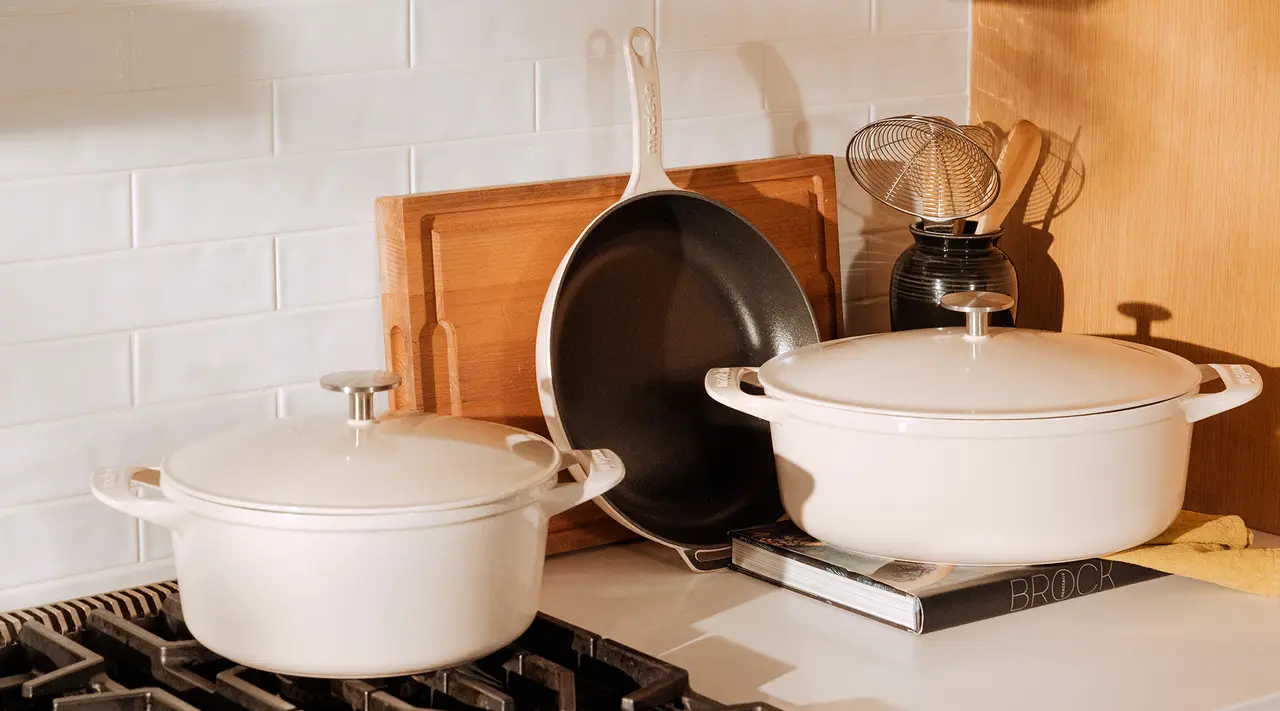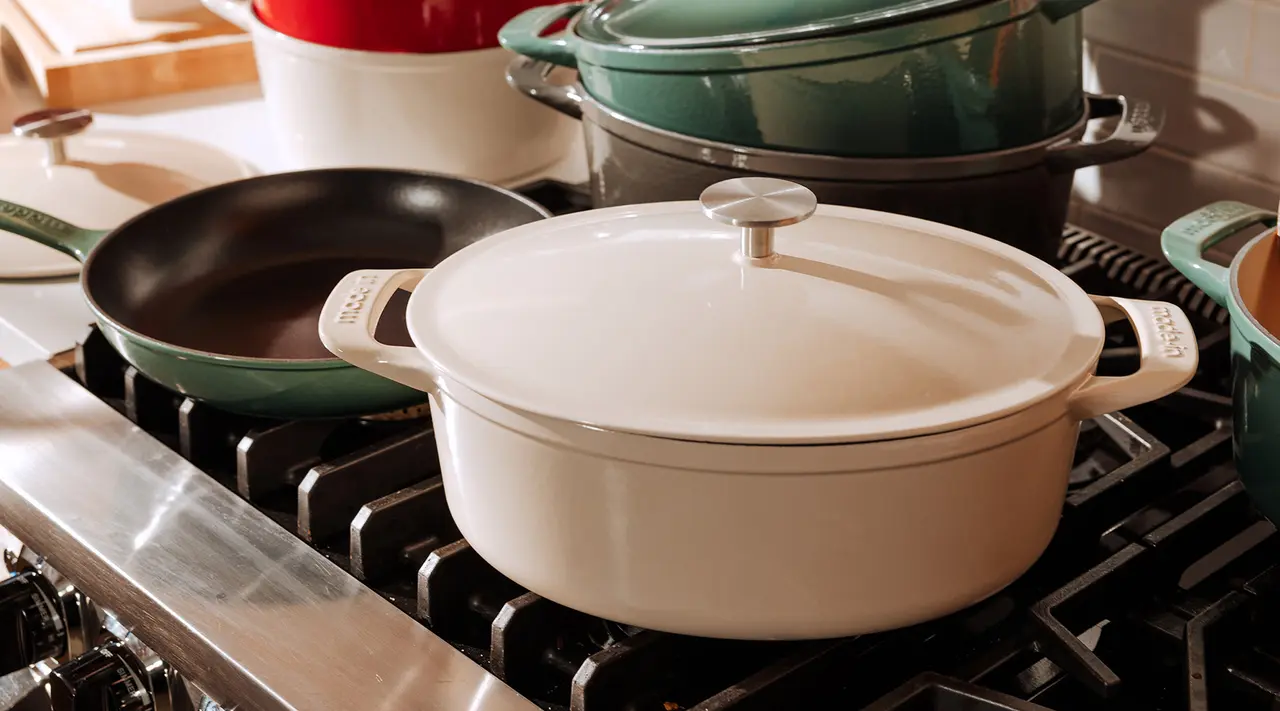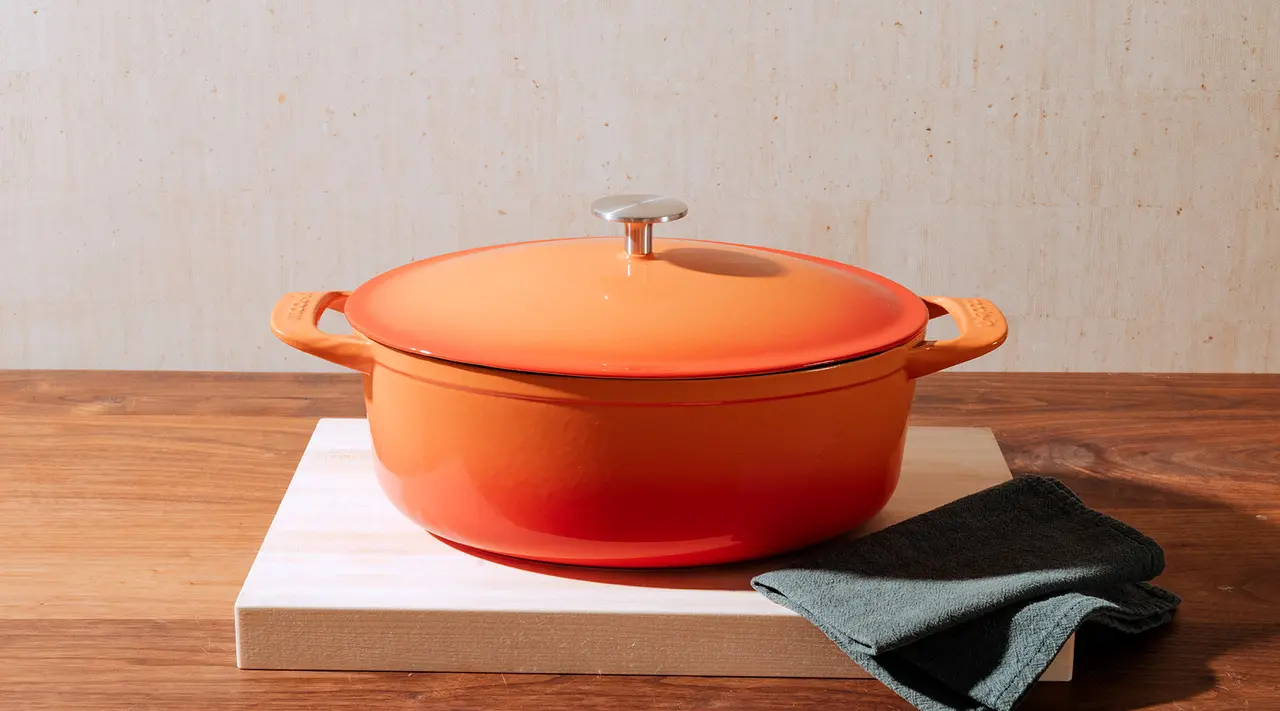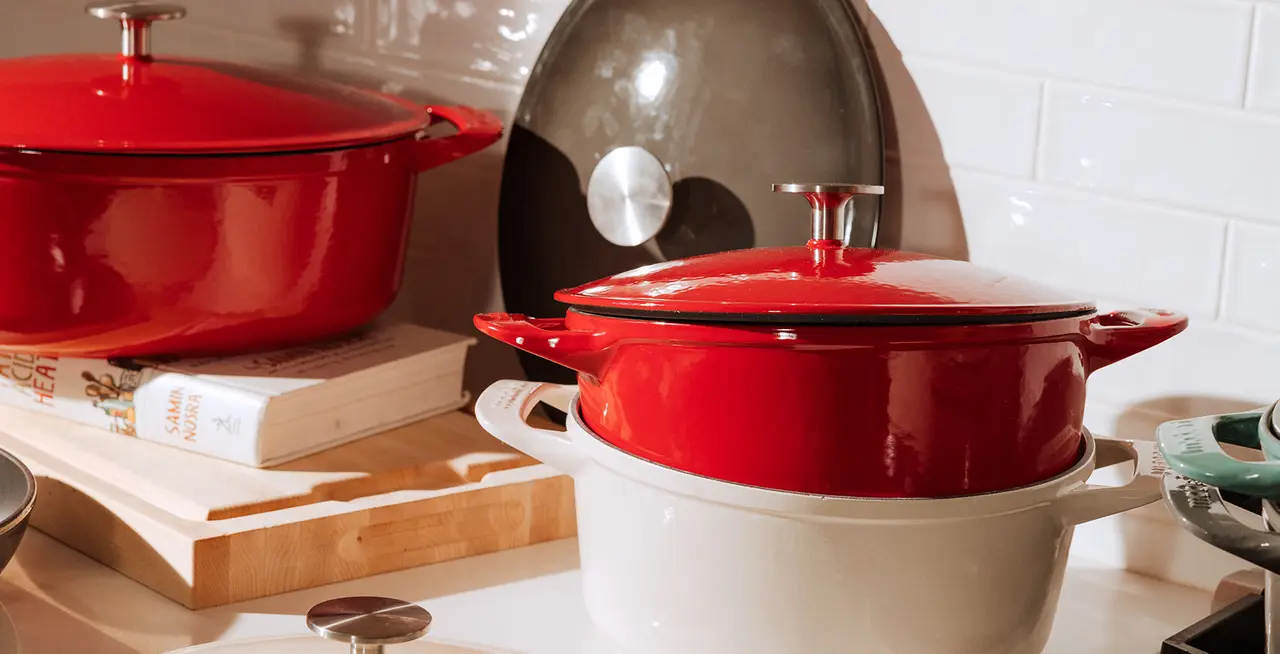Crafting cookware is both a science and an art. The art is rooted in decades of craftsmanship, of creating tools the old way—finishing pieces by hand and always respecting the history of how tools have been made. But the science, well, that comes from innovation and reinventing how cookware can be made through new processes and formulas.
In our opinion, the best cookware shows deep respect for history, while always innovating to make a piece perform better. It should show respect for your grandmother's recipes, while driving you to innovate on them. And there’s no better example of this balance that we can think of than our Cast Iron Collection. Here’s how our Dutch Ovens are made.
The Shape

Each piece of our Enameled Cast Iron Collection starts with the mold, which is formed from recycled compressed sand before it is filled with Cast Iron. Whether the Oval Dutch Oven or the cocotte-shaped Dutch Oven that started the collection, each piece features modernized handles for a more ergonomic experience.
The Cast Iron

Our Cast Iron is a unique blend. 80% of the mixture is recycled Cast Iron, composed of pieces that did not meet our high standards and fragments from other Cast Iron equipment that are then melted down for reuse.
It doesn’t stop there. Our Cast Iron is forged with certain compounds that reduce the weight of the finished product, while still ensuring it’s incomparably durable. Because these compounds are added while the Cast Iron is still liquid, they flow into the mold more effectively, creating a stronger product.
Hand Finished and Enameled

Once the Dutch Oven shape has formed in the sand mold, the mold is then broken, leaving behind the Cast Iron Dutch Oven. The Dutch Oven gets touched up by hand so that the enameling coating will adhere properly.
After the Dutch Oven is fully prepped, it gets sent down the road for enameling, a process that gives our Dutch Oven its smooth interior and exterior. All of our enameling is applied by hand.
First, our Dutch Oven receives a layer of cream-colored interior enamel, which is baked in an oven to set. The outside then receives a layer of colored coating and is baked one last time.
The Best Place to Pour Cast Iron
All of this happens on one road in France. The combination of decades of craftsmanship and innovation produces the best product. It’s one that’s perfect for baking bread, searing short ribs, and serving cassoulet.
Our Dutch Oven is a beautiful piece of cookware that will last for generations, thanks to the art and innovation of our foundry in Northeast France.























